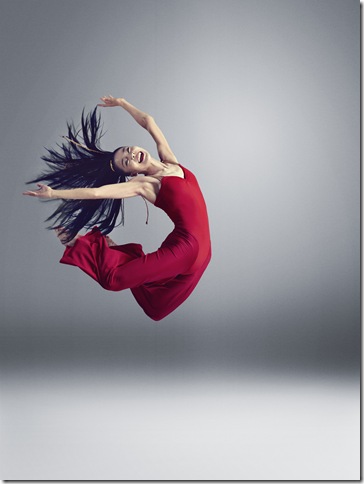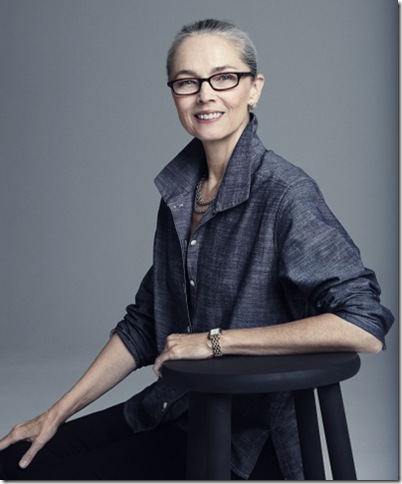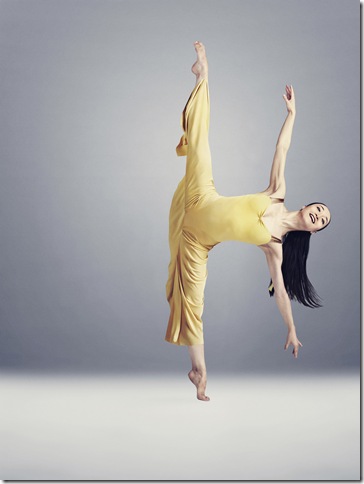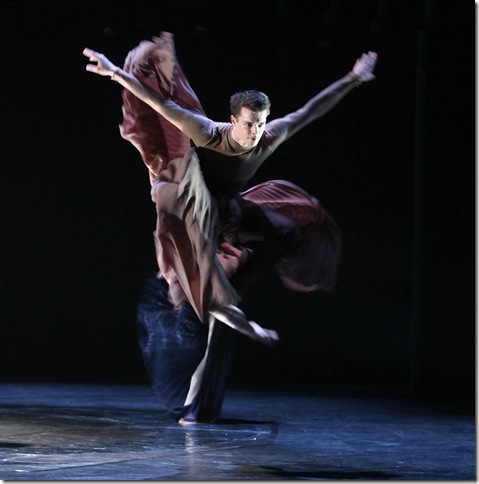By Tara Mitton Catao
After performing last year at the Kravis Center, the Martha Graham Company returned to South Florida on Friday night to launch the popular modern dance series at the Duncan Theatre at Palm Beach State College in Lake Worth.
The company was very good when it performed in the large Dreyfoos Hall at the Kravis, but here in the smaller and more intimate setting at the Duncan Theatre, the company was even better up close and personal. Sitting so much closer to the stage, the audience could clearly see and admire the intricate torso movement for which the Graham technique is famous and feel the waves of energy created onstage washed over them.
In the Graham company, lead roles are regularly exchanged among the artists but at Friday’s performance, the casting seemed perfect and the dancing was outstanding. There was an artistic seamlessness evident in the performance that cradled each of the pieces that the 89-year-old company presented on the program.
Eloquent and elegant, Janet Eilber gave a short and informative pre-performance introduction ribbing us not to worry as we would not be seeing the original dancers, as they had been replaced by younger models. Eilber, who was an outstanding principal dancer under Martha Graham’s tutelage, has been artistic director of the company since 2005. Her time at the helm has fueled some big changes and has resulted in a visionary mission for the company that keeps its repertory current and dynamic even though it spans almost a century.
At the core is Eilber’s drive to keep vitality and creativity thriving within the organization. Graham herself was influenced by the great innovators and artists of her time and chose to collaborate with artists from other art forms, commissioning them to create sets, costumes and musical scores for her choreography. Today’s company, the “younger model,” is continuing that journey, albeit with adaption to current dance trends as well as incorporating today’s dancer’s stronger technical ability and range.
Inspired by the bold color strokes in the paintings of Wassily Kadinsky, Graham created Diversion of Angels in 1948 and it has become one of her most well-known ensemble works. It is a plotless work set to a romantic score by Norman Dello Joio that uses three couples to touch on the different stages of love: young, passionate and mature. However, it is the women in duets that are highlighted, not only by their movement but also with the bold color statement of their dresses, which Graham designed herself and look as contemporary today as if they were designed yesterday.
XiaoChuan Xie was delightful, full of energy and youth in yellow. PeiJu Chien-Pott, as the woman in red, was beautiful, with a commanding technique as she streaked across the stage or as she stopped and extended her leg high in a steadfast tilt. Natasha M. Diamond-Walker was stately and constant in white. The ensemble corps work was strong, particularly that of the men.
Graham’s Errand Into The Maze, which still delivers the same impact as it has for almost 70 years, was danced with great power and depth by Ying Xin and Abdiel Jacobsen. Xin, as Adriadne in the Greek tale, battled her inner fear as she encountered Jacobsen as the Minotaur.
Xin’s dramatic portrayal as she eventually overpowered her fear was rich and authentic and she expertly layered it over her amazing technical prowess. Her strong, accented and articulated torso movements were appropriately complemented by her expressive face.
The role of the Minotaur — with its use of a wooden staff which is lodged behind the neck and restricts any arm movement — places grueling physical demands on the male dancer but Jacobsen, face obscured in a veiled bag, managed not only to make the almost awkward movement seem intrinsic but also to exude a male essence that gave a tinge of sensuality to the duet that resonated. Humans do sometimes crave the rush of fear. Jacobsen is a very pure dancer and his approach to the physical demands of this role, his easy mastery of the Graham technique, as well as the attention he gave to the character of the Minotaur, balanced Xin’s strong portrayal.
Andonis Foniadakis, a contemporary Greek choreographer, explored another Greek tale when he created Echo in 2014. His ensemble work touches on images inspired by the myth of Narcissus who fell in love with his own reflection after rejecting Echo, who was then transformed into a voice that repeats continually.
Foniadakis’ movement is full-throttle and all encompassing. The dancers flailed and threw themselves into this distinctly different movement vocabulary, flinging limbs and arms and heads in all directions. The movement was so fast that one saw only after-images; trails of shapes and forms left onstage like the blurred images of time-lapse action photos.
The costuming was an intricate part of the look and perhaps even of the choreography. Narcissus (Lloyd Mayor), his image (Lloyd Knight) and Echo (Chien-Pott) all wore long, diaphanous, pleated skirts that were lit from behind by the strong back and side lighting, further enhancing the trail of movement left in the space. In this bevy of driven movement with its glowing swirling skirts, the image of moths, batting and circling in an attempt to get close to the light, came to mind.
Amongst all the flurry, Lloyd Mayor was truly eye-catching as Narcissus. He had the perfect blend of control and abandon needed to give this type of movement definition. He managed to find and savor brief moments of subtle control, creating a contrast before he flung himself into the momentum of the movement. His expert partnering of Knight and Chien-Potts was filled with fleeting nuances of interspersed sexuality or disinterest.



